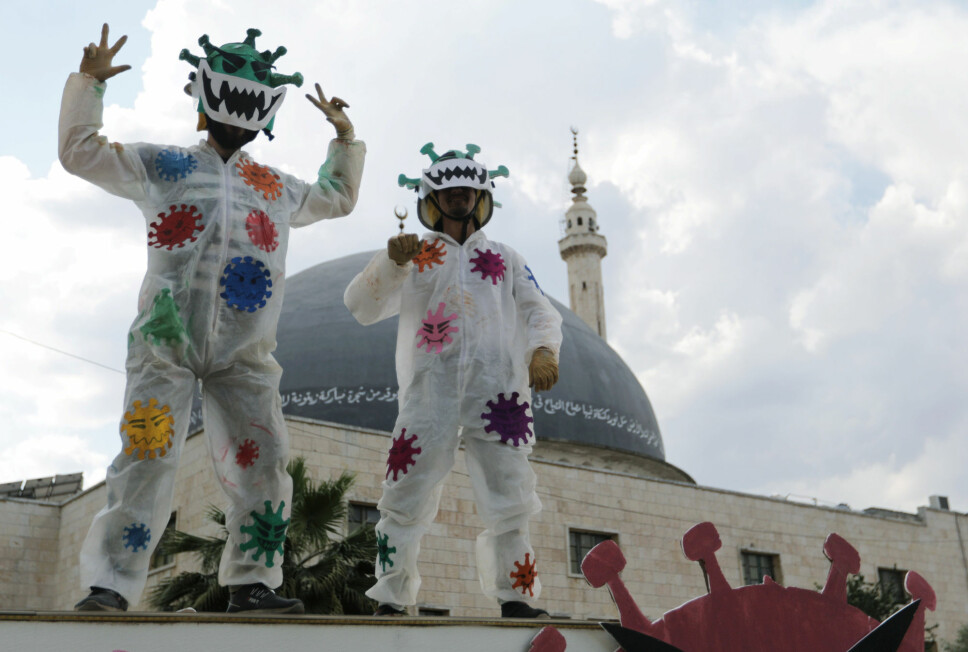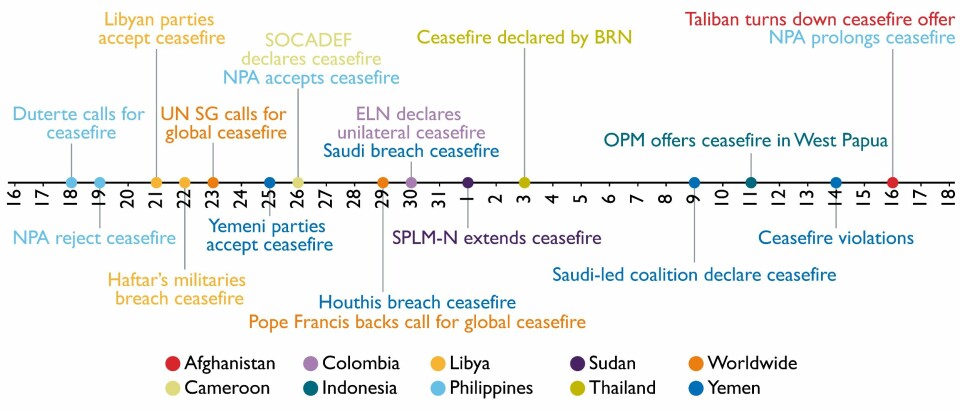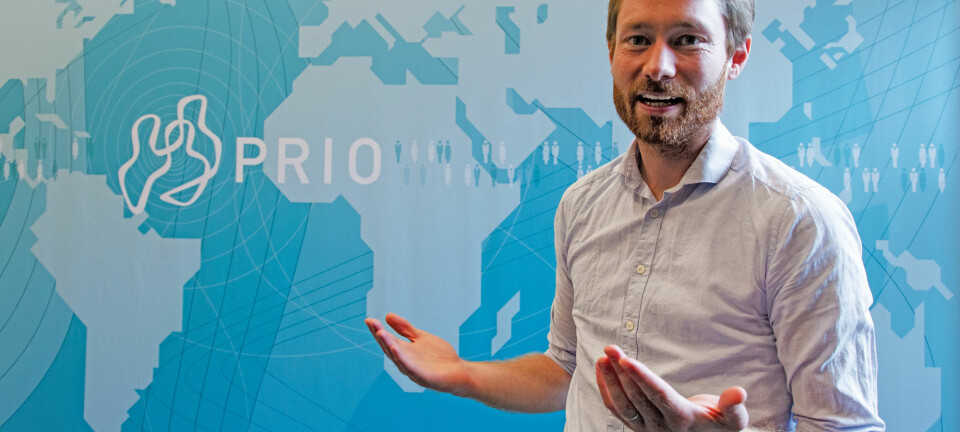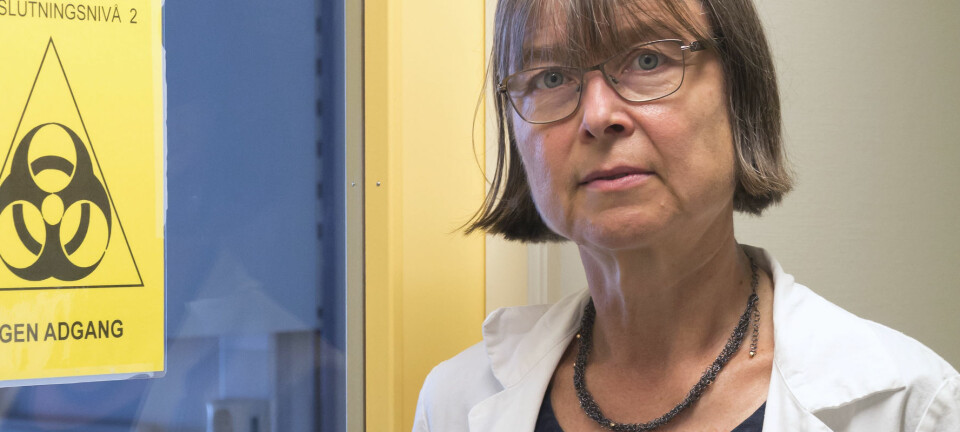Share your science:

Can the Coronavirus lead to more peace?
SHARE YOUR SCIENCE: Researchers have never before seen so many countries declaring a ceasefire because of the same reason.
Very early in the Corona crisis, the UN Secretary general urged for a global ceasefire to combat the coronavirus pandemic. Armed groups and governments in over 14 countries have initiated ceasefires in response to the call. This includes Yemen, Afghanistan and Syria, three countries that have recently experienced some of the world’s bloodiest conflicts.
The question is, have these ceasefires affected the level of violence?
Ceasing to fight for humanitarian purposes
A ceasefire is an agreement to stop using violence at a specific point in time. This could be for a short period with an end date, or it could aim to end violence altogether.
Ceasefires are implemented for many different reasons. Often it is related to a peace process, and the aim is to reduce violence and building trust among the warring parties to make it easier to sit down and talk. Another common reason for implementing ceasefires is humanitarian purposes. For example, to help evacuate civilians from an area with intense fighting, or to secure access to food and medical help. The Corona ceasefires fall into this category
Researchers at the Peace Research Institute Oslo (PRIO) and the ETH Zürich have collected data on ceasefires over the past 30 years, and found that in this period more than 2300 ceasefires have been declared. About 10 per cent of these were humanitarian ceasefires.
We have previously seen ceasefires related to epidemics such as Ebola, but these are often very local.
This is the first time we have seen so many countries declaring a ceasefire because of the same reason.
Corona ceasefires
Since the middle of March we have seen 14 ceasefire initiatives related to the coronavirus.
In seven countries, one or more actors have called for a ceasefire, meaning they suggested that the parties should declare one, but it has not been implemented.
Five countries currently have a ceasefire, and in two countries a ceasefire was agreed upon, but was broken shortly after.

Do the Corona ceasefires work?
We don’t really know what makes a ceasefire successful in the long run. However, the corona ceasefires have a very clear purpose of reducing violence to be able to fight the pandemic. Thus, we can compare the number of people who were killed before and after the ceasefires were implemented and say something about the effect of the ceasefire.
Overall, we do not see a decrease in violence in the world after the call for a global ceasefire.
However, if we look at specific countries, we see a different picture. (Note that this is based on data up until 18. April)
High levels of trust in The Philippines
The Philippines was one of the first countries to declare a ceasefire, even before the global call from the UN Secretary.
Currently there are two conflicts in the Philippines, one between the government and the Communist party, and one between Islamist groups in the southern parts of the country. It is between the warring parties of the first conflict that a ceasefire has been agreed on. This is normally not a very violent conflict, but we clearly see that the level of violence has gone down.
However, we see that the level of violence in the conflict in the south also went down right after the ceasefires was declared.
What is also interesting about the Philippines is that there is a traditional ceasefire ever year over Christmas and new year. This could mean that there is a high level of trust that they will maintain the Corona ceasefire making it more likely that it will succeed.

Not a proper ceasefire in Afghanistan, but less violence
Afghanistan has been the most violent conflict in the world over the past three years, with more than 25,000 people killed each year. The country is in dire need of a reduction of violence.
During the past months there have been attempts to start a peace process. The Taliban and US agreed on a seven-day period of reduction of violence at the end of February to pave the way for discussions between the Taliban and Afghan government. However, the violence increased again after the seven days were over, making a peace process more difficult.
On March 19th the Afghan government called for a nationwide ceasefire in order to prevent the spread of the pandemic in the country. On April 1st the Taliban announced that it was ready to declare ceasefires in their controlled areas if they were ‘hit by a coronavirus outbreak’. While this was not a proper ceasefire, it does signal willingness by the Taliban, and we see that the level of violence has gone down particularly after April 1st .
Syria at its most peaceful since 2011
Since the Arab Spring in 2011 Syria has experienced a very violent conflict. While the conflict has calmed down in the past two years it is still among the most violent in the world. In the end of February intense fighting occurred in the Idlib region. To ease the situation, Syria, Russia and Turkey agreed to a local ceasefire in the region. This was prior to the UN global call for a ceasefire.
There has been a call for a nationwide corona ceasefire in Syria supported by the United Nations Special Envoy to Syria and The Kurdish-led Syrian Democratic Forces (SDF), but so far, no agreement has been made. Nonetheless, while the ceasefire between Syria, Russia and Turkey was limited to the Idlib region, it seems it has had an effect on the general level of violence. Since the ceasefire, Syria has become much less violent and is experiencing its most peaceful period since 2011.
Bombing medical facilities in Libya
Since the fall of Muammar Gaddafi in 2011, Libya has had a civil war between the internationally recognized Government of National Accord (GNA) and General Khalifa Haftar’s Libyan National Army (LNA). The conflict became more violent in 2019.
The first call for a corona virus-related ceasefire in Libya came as early as 18 March. Indeed, Libya seemed to serve as an optimistic example for the world when the parties agreed to a humanitarian ceasefire on 21 March. However, the optimism was short lived, as less than a day later battles continued in Libya and four days later the capital Tripoli experienced intense bombardment.
The level of violence in Libya has increased after the call for a global ceasefire and the fighting seems to be as intense as before the corona ceasefire.
What is especially concerning are reports that the bombardment over the last month has damaged medical facilities and destroyed 400 hospital beds that could have been coronavirus treatment facilities.
Libya represents what might be a worst-case scenario for a humanitarian ceasefire. Instead of giving the cities a break in the conflict to fight the pandemic, the conflict has intensified. This can be very damaging for the peace process in the long run, as it further erodes trust between the parties.
Coronavirus ceasefires can start peace processes
While it is too early to say whether the corona ceasefires will have an effect in the long run, we can say something about how they affect conflict in the short run.
The main aim of a humanitarian ceasefire is to help civilians in an already difficult situation. However, they can also serve as signals for willingness to stop fighting.
The coronavirus ceasefires can serve as a springboard into a peace process, or, as in Libya, they can move the conflict parties further apart.
It is critical that the international community monitor these processes to take advantage of the windows of opportunity for promoting dialogue and peace where possible.
Reference:
Rustad, Siri Aas; Håvard Mokleiv Nygård & Fredrik Methi (2020) Are the Coronavirus Ceasefires Working?, Conflict Trends, 4. Oslo: PRIO.
Share your science or have an opinion in the Researchers' zone
The ScienceNorway Researchers' zone consists of opinions, blogs and popular science pieces written by researchers and scientists from or based in Norway.
Want to contribute? Send us an email!
———












